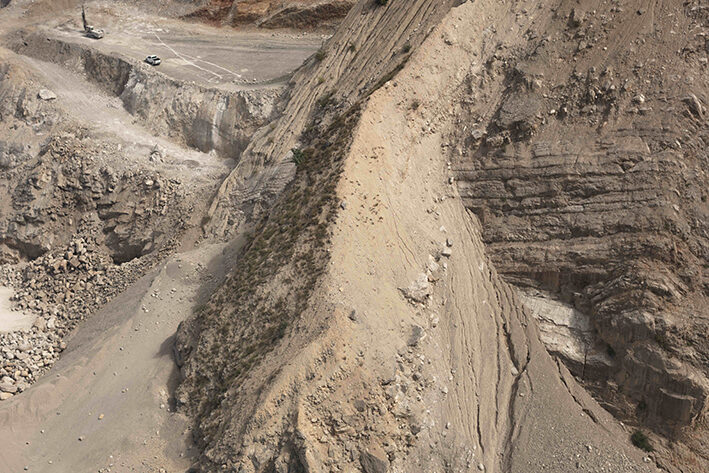Caillasses - Protocols for the Exploration of a Territory in Transition

Licia Soldavini as part of Constructlab was invited by the Art Centre Villa Bernasconi and the Embassy of Foreing Artists to Geneva, to reflect on the transformation of the PAV, a perimeter historically dedicated to craft and industrial production into a centre for tertiary activities and housing. The issues of the PAV project could not be approached only from the point of view of the planners, or politicians – all of them had already expressed an opinion. Their multiplicity, diversity and plurality should have been considered given the presence of human and non-human actors who, although strongly concerned, are rarely questioned when decisions are taken.
Together with the architect Sébastien Tripod and the author Vincent Yersin, we started by questioning the quietest, but most present actor: the stone. Accused of sterility and blamed for their austerity, stone and the materials derived from it are generally opposed to the anarchic spontaneity of living things. Passive, inert, cold: the mineral is among the elements that humanity has most easily domesticated. Its transformation into concrete, bitumen and cement characterises the society born of industrial revolutions, hygienism and the market economy. Although omnipresent in urban areas, the mineral is very often negatively perceived. It is even at the heart of the bad guys… yet it plays an essential role in sustaining earthly life, connecting us to plants, bacteria, fungi and soils.
In order to make visible the implications and interactions of the stone’s ecology on the territory, we have approached its exploration by articulating artistic research, scientific knowledge and everyday culture. Working beyond disciplines has enabled us to listen to the stone, to open a dialogue with animals, water, plants, backhoe loaders, but also with people, their hopes and fears. Caillasses is a learning experience, a contribution to the collective intelligence of the territory, in order to reach a common objective: to work towards an alliance between minerals and the living species that design and inhabit this milieu, to face together the climate challenges of the coming decades.